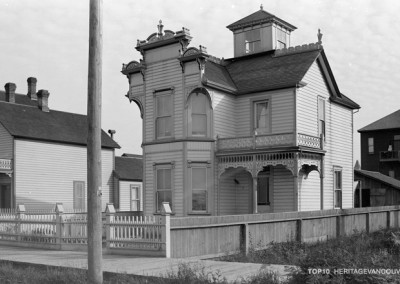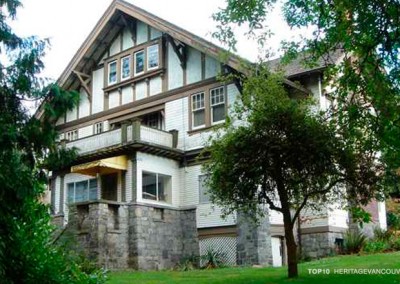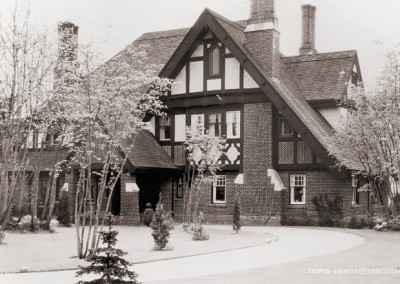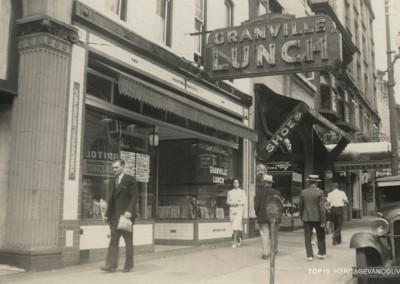The renewed pressure to develop more housing in the historic West End is increasing the threat to replace low-rise heritage buildings with higher density rental and condominium buildings.
The City’s introduction of the Short Term Incentives for Rental Housing (STIR) Program, the imminent demolition of the Legg Mansion and the absence of a number of significant buildings from the Heritage Register all pose a potential threat to the heritage and character of the West End.
The houses located at 1301, 1309, and 1315 Davie Street and 1161 Broughton Street, built between 1900 and 1906, represent buildings that have heritage merit but have not yet been included on the heritage register.
* Interactive Google map link tracking all heritage housing stock is at the bottom of this page.
Threat
What is the threat to West End Housing?
As Downtown South is now almost completely built out to capacity, developers are looking to the West End as a potential area for new rental buildings and condominiums. The process to create additional rental units was encouraged on June 18, 2009, when City Council brought in STIR. This program fast-tracked the building of rental units, by allowing for spot zoning and increased height and density. A STIR project at the corner of Davie and Bidwell has resulted in the demolition of one of the West End’s oldest houses as well as all but the façade of Maxine’s Hideaway.
In 2011, Vancouver City Council demonstrated a willingness to allow the demolition of significant heritage buildings in the West End by voting against a Heritage Revitalization Agreement that would have seen the “A” listed Legg Mansion restored and preserved. A few months later, the developer received approval for a very similar multi-storey project, but without the mansion. The Legg Mansion, one of only three remaining grand estate homes built in the late 19th century now faces imminent demolition. This will be the first demolition in Vancouver of an ‘A’-listed heritage structure since the demolition of the Medical-Dental Building on Georgia Street in 1989.
The city’s approval to demolish the Legg Mansion signals that even the most historically significant buildings on the City’s Heritage Register are not protected from demolition. Buildings that have heritage merit and are not on the Heritage Register face an even greater risk of being demolished. The houses at 1301, 1309 and 1315 Davie Street and 1161 Broughton Streets are a few examples of the many Queen Anne, Edwardian and Arts-and-Craft style homes remaining from the turn of the century that are not on the Register. The same pressures threaten the demolition of some mid-century low-rise housing, which also contributes to the heritage, character and social diversity of the West End.
The introduction of the STIR program, the imminent demolition of the Legg Mansion, and the lack of funding to add heritage sites to the Heritage Register mean that heritage and character houses and low rise apartments are under increasing threat of demolition and redevelopment.
Significance
Why is the West End significant?
One of the unique features of the West End is the layering of many periods of the city’s history as seen in a fascinating mix of heritage buildings from different eras. The neighbourhood’s buildings range from some of the oldest Queen Anne style houses in Vancouver (the Mace House on Comox Street dates from 1888), to representative Victorian and Edwardian-era houses, handsome Period Revival and Art Deco apartment blocks to landmark Modern high-rises. This blended history provides a wonderfully interesting urban mix of styles and types that results in uniquely varied streetscapes, enhanced by many mature street trees and luxuriant landscaping. It is this variety that makes the densely-built West End so urban, livable and interesting.
The West End is located in the most densely populated, intensively active portion of the Lower Mainland. Bounded by West Georgia Street, Burrard Street, English Bay and Stanley Park, it shares the peninsula with the Downtown, Central Business District and Stanley Park. For the first few years after the founding of Vancouver in 1886, the West End was only sparsely settled, due to its distance from Gastown, the city’s birthplace.
Starting in the 1890s the remainder of the forest was logged and gradually replaced with grand Victorian homes for middle and upper-income families. With the Canadian Pacific Railway’s development of Shaughnessy in the first decade of the new century, the West End’s role as Vancouver’s “exclusive” residential area shifted and the community’s next stage of development began. Apartments were built among single-family homes on tree-lined streets, houses along Robson, Denman and Davie – all served by streetcar lines – were redeveloped as shops, and larger homes were converted into rooming houses.
During the 1930s and 40s, the next wave of apartment development occurred. These were low-rise structures, many with impressive Art Deco and Tudor-inspired facades designed to give the community an air of permanence and respectability.
The next stage of redevelopment in the West End began in 1958, when the 3-4 storey height limit was lifted and zoning changes permitted higher densities, resulting in the rapid replacement of houses with mid-rise and high-rise apartment blocks. A change in zoning in the 1980s reduced the height and density of new buildings in the West End. The City introduced a by-law to preserve the rental housing stock, by preventing building conversions from affordable rentals to more expensive condominiums. These two city policies meant that for several years there was very little pressure on heritage buildings in the West End. This was a time of notable heritage success stories including the development of “Barclay Heritage Square” and “Mole Hill”, and the retention of the Abbott House on West Georgia Street and “Gabriola” on Davie Street
Position
Heritage Vancouver’s Position
In 2012 the City of Vancouver began the development of a new Community Plan for the West End that will impact the future of heritage and character in the West End. Two surveys conducted prior to the launch of the Plan show that the community places a high value on heritage.
Heritage Vancouver is a stakeholder in this plan; we are a community heritage champion, and will play a leading role in the community circles on heritage and character. We will also provide an opportunity for the community to engage in on-line discussions about the future of the West End’s heritage and character.
We will work as a community to create on-line opportunities available to the community:
- Identify heritage and character buildings, features, landscapes and streetscapes that are valued
- Tell personal stories about buildings, landscapes and streetscapes
- Have conversations about ways to preserve the special heritage and character features of the West End
Although the current planning process does not make provision for the addition of buildings to the Heritage Register, Heritage Vancouver will maintain a list of buildings, landscape features and streetscapes identified by the community. When funding becomes available to update the City of Vancouver Heritage Register, the buildings and features on this list will be put forward as candidates for inclusion on the Register. In the meantime this list will guide Heritage Vancouver in discussions with the City of Vancouver regarding sites not currently listed on the Heritage Register.


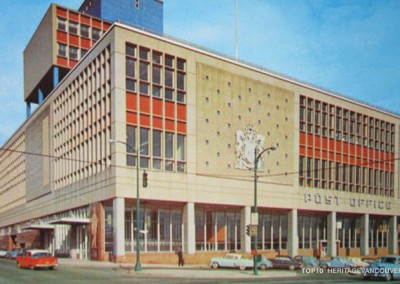

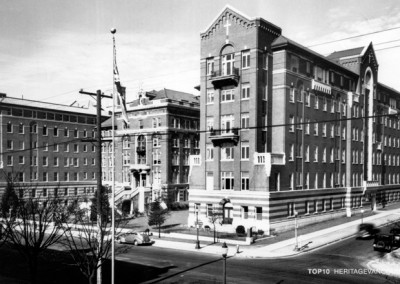
![4. Schools: Sir James Douglas Elementary (1910-12) [lost]](https://heritagevancouver.org/wp-content/uploads/2012/08/t10-school-douglas-795-400x284.jpg)
